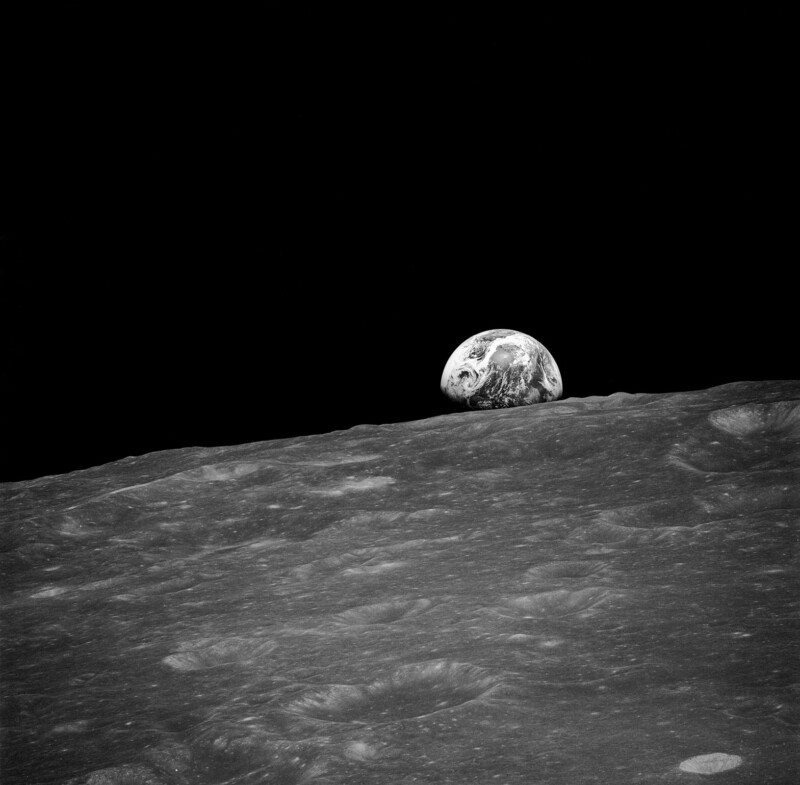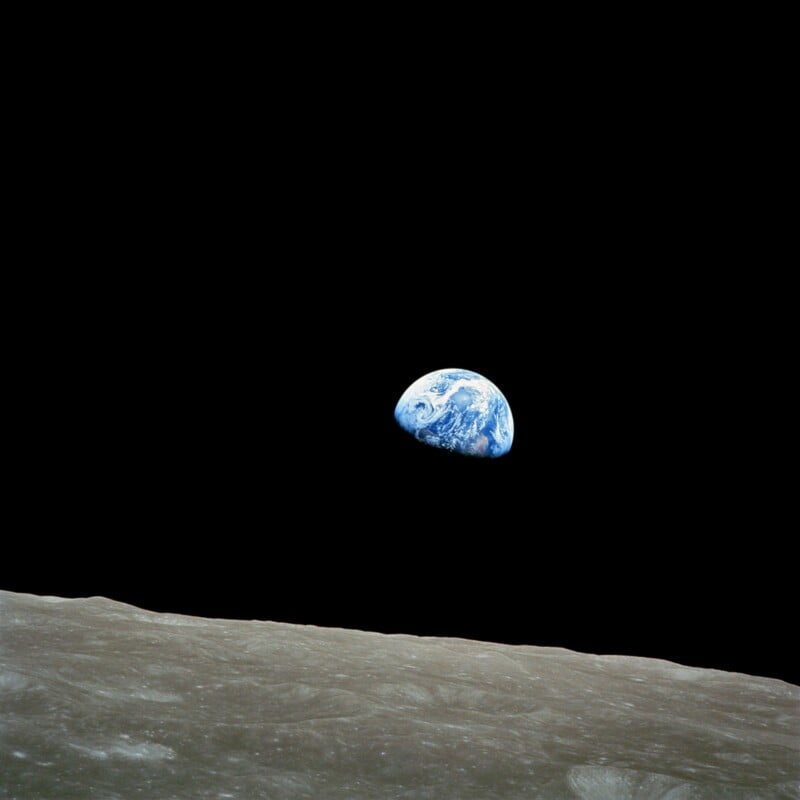The Story Behind ‘Earthrise,’ One of NASA’s Most Iconic Images
Apollo 8, the first crewed mission to the moon, entered lunar orbit on Christmas Eve, December 24, 1968. As the Apollo 8 crew members Frank Borman, James Lovell, and William (Bill) Anders orbited the moon aboard the spacecraft, Anders spotted and captured Earthrise, one of the most iconic space photos ever made.
Borman, Lovell, and Anders became the first humans to orbit the moon on that fateful Christmas Eve and the first to witness the magnificent “Earthrise.”
NASA’s Chief Scientist and Senior Climate Advisor, Dr. Katherine Calvin, recently sat down with Bill Anders, who is now 89 years old, to discuss his historic color Earthrise photo.

“When you were in space, you had this opportunity to see the planet as a whole, this beautiful blue planet. What was that like?” asks Dr. Calvin.
“Before we got to the moon, I was able to look back at the Earth,” replies Anders. “It was about the size of my fist at arm’s length, and you really couldn’t see any details. You couldn’t see the continents even.
“It was Christmas time, and I thought [Earth] was like a fragile Christmas tree ornament. I thought to myself, ‘It’s too bad that we don’t treat it more like a Christmas tree ornament.’ And then when I was lucky enough to take the iconic Earthrise picture, which basically kicked off Earth Day and that kind of thing, it’s really too bad we’re shooting missiles and rockets at each other on this tiny little place we call home, it’s the home in the universe for us, for humans.
“It’s too bad we don’t treat it a little better.”
Anders goes on to reflect on how his Earthrise photo affected people back on Earth and its long-lasting impact. The photo helped people realize that Earth is fragile and delicate. It’s difficult to view it as a strong, enduring, and perhaps infinite home when viewed from space, where Earth looks so small, and the conflicts people experience seem even smaller.
“Clearly, mankind has not been kind to the planet,” Anders remarks.
Anders explains that before heading to space aboard Apollo 8, he received “a little bit of photography training” and a camera. He “took a few pictures,” but didn’t even have a light meter.
“We were in lunar orbit, upside down and going backward. For the first several revolutions, we didn’t see the Earth and didn’t really think about that. Then we righted ourselves, heads up, and twisted the spacecraft so it was going forward. While Frank Borman was in the process of doing that, suddenly I saw out of the corner of my eye this color — it was shocking,” Anders explains about capturing the Earthrise photos.

In archival NASA footage, viewers can hear Bill Anders say, “Oh my, God, look at that picture over there!” as he sees the Earth coming up.
As Anders is shooting, Jim Lovell implores him to capture more shots with various settings to make sure that Anders got the best possible picture.
“Without a light meter, I really didn’t know what to set it, so I just took the f-stop and took a shot, moved it, took a shot, moved it, and didn’t really think that much about it,” Anders says to Dr. Calvin.
“I think had I not taken the Earthrise picture, it’d be ‘Bill who?'” says Anders.
Dr. Calvin has a copy of Anders’s Earthrise photo in her office. “It’s a reminder every day of why we do this, for science, for inspiration, for innovation, for home.”
“Yeah, it makes people think. This fragile little ball we live on,” Anders says.
While Apollo 8 may have been a landmark mission to the moon, the resulting Earthrise image has profoundly impacted how people view Earth. NASA continues to perform extensive studies and science dedicated to Earth, and help humanity learn more about the planet, its health, and how to take better care of it.
“We set out to explore the moon and instead discovered the Earth,” Anders eloquently says.
Thanks to audio recordings, photo mosaics, and elevation data from the Apollo 8 orbiter, NASA has been able to visually recreate how Anders’s iconic photo was captured in real-time.
Between Anders’s original photos, NASA’s visualization, and the new interview between Dr. Katherine Calvin and Anders, it’s possible to learn everything about the Earthrise photo, one of the most iconic and enduring images ever captured.
Image credits: Bill Anders / NASA